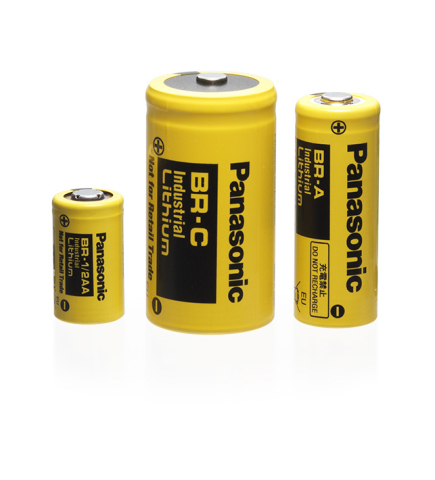 Panasonic’s lithium primary batteries have been mounted in the asteroid explorer Hayabusa2 launched on December 3, 2014. Three models of BR series cylindrical-type lithium primary batteries (BR-A, BR-1/2AA, and BR-C) with an extensive shelf life have been mounted this time. The same type of batteries had also previously been mounted in Hayabusa, which returned to Earth in 2010. This time, the batteries are being used to support Hayabusa2’s mission, which involves traveling 5,240,000,000 km back and forth over six years while serving as a power source for four instruments: a beacon signal transmitter for collecting the re-entry capsule, which stores particle samples from an asteroid and brings them back to Earth, an impactor for creating an artificial crater (depression) to retrieve sub-surface materials from the asteroid, a deployable camera for shooting the creation of an artificial crater by the impactor, and a flight data measurement instrument for the re-entry capsule upon its re-entry into the atmosphere.
Panasonic’s lithium primary batteries have been mounted in the asteroid explorer Hayabusa2 launched on December 3, 2014. Three models of BR series cylindrical-type lithium primary batteries (BR-A, BR-1/2AA, and BR-C) with an extensive shelf life have been mounted this time. The same type of batteries had also previously been mounted in Hayabusa, which returned to Earth in 2010. This time, the batteries are being used to support Hayabusa2’s mission, which involves traveling 5,240,000,000 km back and forth over six years while serving as a power source for four instruments: a beacon signal transmitter for collecting the re-entry capsule, which stores particle samples from an asteroid and brings them back to Earth, an impactor for creating an artificial crater (depression) to retrieve sub-surface materials from the asteroid, a deployable camera for shooting the creation of an artificial crater by the impactor, and a flight data measurement instrument for the re-entry capsule upon its re-entry into the atmosphere.
Hayabusa2 is the successor to Hayabusa, which successfully explored the asteroid Itokawa (S-type asteroid) and collected particle samples. The mission of Hayabusa2 is to explore a C-type asteroid, which is considered to contain organic matter and water, and bring back particulate samples to Earth. With the installation of the impactor to create an artificial crater, it will also attempt to collect sub-surface particulate samples from the asteroid in addition to samples obtained from its surface.
With Hayabusa, Panasonic’s BR series cylindrical lithium primary batteries had maintained their performance even after long-term space flight spanning more than seven years since launch and were used to transmit beacon signals to indicate the landing position of the Hayabusa’s re-entry capsule, thus contributing to the rapid retrieval of the capsule upon its return to Earth in June, 2010. BR series lithium primary batteries use graphite fluoride on the positive electrode, which confers a long shelf life in addition to safety, and also have a wide range of operating temperatures and low self discharge rate. Their high reliability, contributed to retrieval of the Hayabusa capsule in the Australian desert, has allowed them to serve in a far greater number of roles in Hayabusa2 and they will make a substantial contribution to the operation of the mission.
BR series lithium primary batteries are primary batteries that employ graphite fluoride on the positive electrode and lithium on the negative electrode. With a high nominal voltage of 3 V, they excel in their long shelf life, wide range of operating temperatures (-40°C to 85°C) and credibility. They also serve as the main power supply for various meters such as 10-year maintenance-free gas meters, as a memory backup power source, and in vehicle equipment such as ETC and keyless entry.







